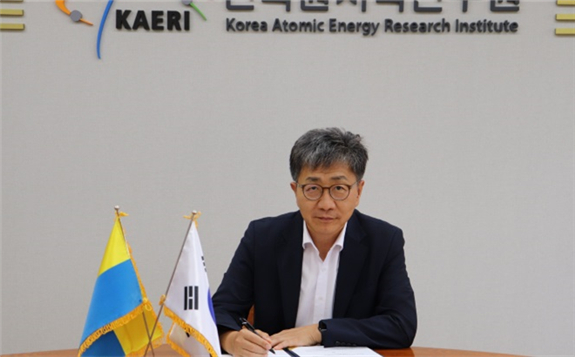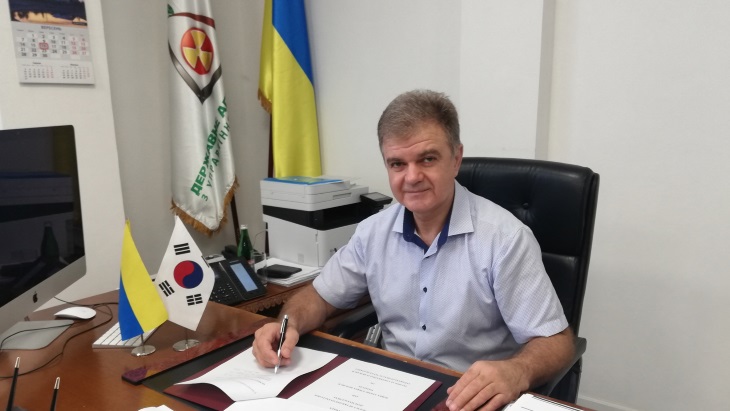The Chernobyl nuclear power plant (ChNPP) in Ukraine is to become a "testing ground" for South Korean technologies for the treatment of radioactively contaminated materials, Oleksandr Skomarokhov, ChNPP deputy director of radioactive waste management, announced on 28 October.

The announcement followed the signing of a Memorandum of Understanding last month by Sergei Kalashnyk, head of the State Agency of Ukraine on Exclusion Zone Management (SAUEZM), and Won Seok Park, president of Korea Atomic Energy Research Institute (KAERI).
In a statement on the SAUEZM website, Skomarokhov said the agreement enables KAERI to perform the decontamination of concrete and metal fragments of stainless steel and carbon steel. Tests on these materials will be conducted until the end of 2021.
"KAERI has technical developments aimed at the decontamination of radioactively contaminated surfaces, but it can't test these technologies because there are no actual (non-artificially) contaminated surfaces in Korea today," Skomarokhov said.
"At the same time, the Chernobyl nuclear power plant, which is being decommissioned, is constantly looking for the ways and means both to qualitatively perform decontamination of materials and to significantly reduce the amount of radioactive waste produced in this process. Thus, the ChNPP site is a kind of laboratory testing ground for KAERI technology specialists," he added.
KAERI said the MoU is an extension to its research on the practical use of nuclear dismantling core technologies developed through the Nuclear Technology Development Project of South Korea's Ministry of Science and Technology. KAERI and the ministry plan to demonstrate the technology at ChNPP and then "develop practical models" for its use in third countries.

ChNPP has been shut down since the 1986 accident, but no full-scale dismantling work has been carried out. This is expected to start in 2045, KAERI said.
Radioactive concrete processing technology separates and processes concrete waste generated after the dismantling of nuclear facilities by using high heat and physical force to separate aggregate and cement, which can reduce the amount of radioactive waste by more than 50%, KAERI said.
Radioactive contaminated metal equipment decontamination technology employs a foam decontamination agent to a large area of building or to large equipment and "washing" it to remove the radioactive material to about one-tenth of its original degree of contamination, it said.
In addition, it plans to demonstrate radioactive waste disposal technology, field measurement technology and soil treatment technology for large-area contamination sites, and "residential restoration" technology in a series of projects.
Park Won-seok, said: "This agreement will be an opportunity to share technology and know-how with Ukrainian people with experience in the field of nuclear dismantling and to build future-oriented partnerships."